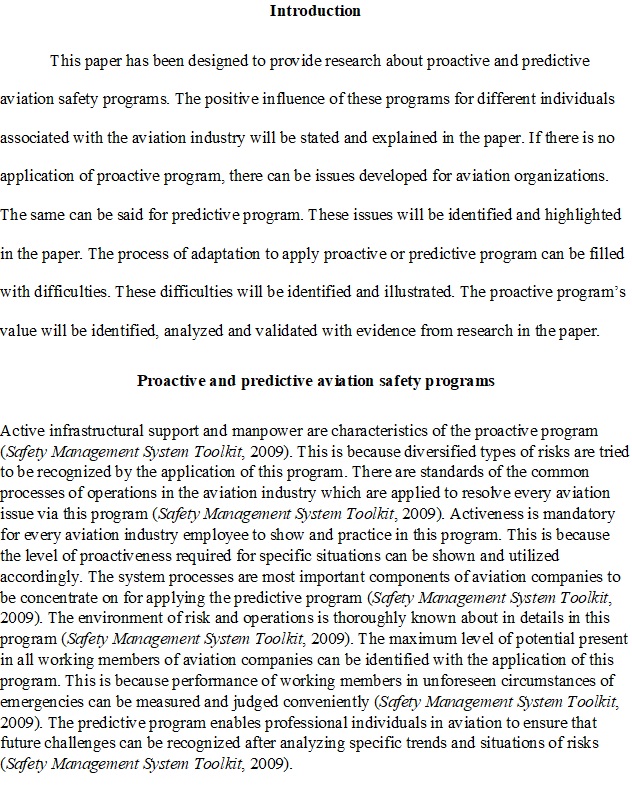


Q Review the module material and respond to the following prompt and question using the written format included in the instructions and support pages. Writing Prompt and Question Defend the importance of a proactive and predictive aviation safety program as it relates to reducing risk and hazard. Explain the value of a proactive safety risk management program. Your papers must demonstrate a comprehension of the issue based on facts, not opinion. Facts may be from the course or other stated references. Opinions must be corroborated by references. Use proper terminology as you apply the process (evaluation and analytical) of assessing hazards and risks to an aviation safety program. Instructions Write a 3-4 page response, double-spaced, using an average of 1,000-words. Solid writing using APA mechanics and style are required. Support your answers and data with references and cite your sources. The substance is what matters. You should review and utilize the American Psychological Association’s Publication Manual, a required text for this course, as guidance for your submissions. A title and reference page are additional pages to the 3-4 page response. All other APA formatting applies. For writing assignment guidance and standard criteria, please refer to the Writing Assignment Information and Academic Resources pages. Save your assignment using a naming convention that includes your first and last name and the activity number (or description). Do not add punctuation or special characters.
View Related Questions